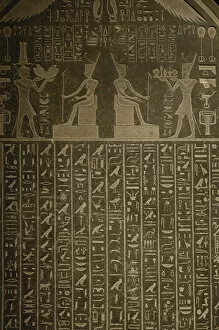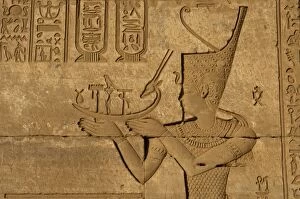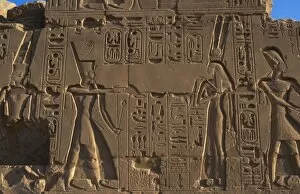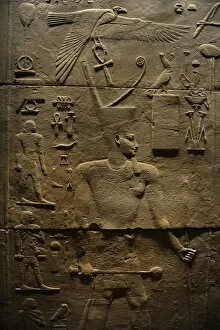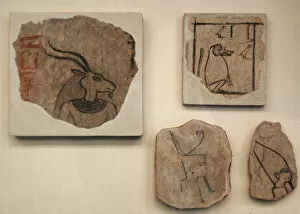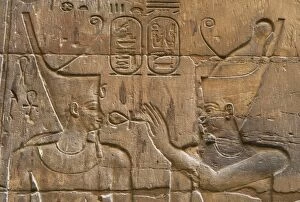Deshret Collection
"Deshret
For sale as Licensed Images
Choose your image, Select your licence and Download the media
"Deshret: Exploring Ancient Egypt's Rich Artistic Legacy" Step back in time and immerse yourself in the captivating world of ancient Egypt through the intricate artworks that have withstood the test of time. From the Stele of Herakleion-Thonis to the Tomb of Amen Khopshef, each artifact tells a story steeped in history. The Naucratis decree (380) reveals an important moment in Egyptian politics, while the depiction of God Anubis on the right side of Amen Khopshef's tomb reminds us of their beliefs and reverence for deities. The figure of Serpent Uto (?) wearing Lower Egypt's crown found on a ring showcases their attention to detail and symbolism. As we explore further, we encounter Pharaohs offering prayers at temples like Kom Ombo and Seti I at Abydos. These grand structures were not only places of worship but also symbols of power and divine connection. Karnak presents us with scenes where pharaohs stand before gods, seeking guidance or making offerings as a signifier of their devotion. The relief depicting a scene from Kings Heb Sed takes us into royal palaces, giving glimpses into regal ceremonies and celebrations. Fragments from Amenhotep III's tomb decoration offer insights into his reign's opulence and artistic prowess. Finally, Karnak once again brings forth Pharaoh Ramesses II making repeated offerings—a testament to his dedication towards pleasing gods and securing prosperity for his kingdom. Deshret invites you to delve deep into these mesmerizing artifacts that paint vivid pictures from ancient times—where art was not just decorative but held immense cultural significance. Let your imagination soar as you witness firsthand how art immortalizes history.


